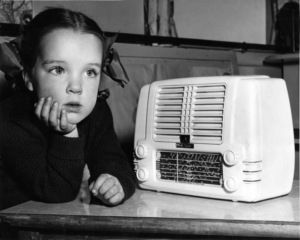News
New media more popular than old, even though P4 radio is still four times more popular than Netflix
This article is more than 2 years old.
The average Dane streamed 9 more minutes a day than they watched on linear TV, while social media continues to be popular with most age groups

Radio is still pretty popular in Denmark (photo: AMC/Flickr)
The average Dane now spends more time consuming new media – streamed television, social media, online news and podcasts – than old media such as linear TV, radio, and printed newspapers and magazines.
According to the annual Medieudviklingen report, 2022 was also a landmark year for media consumption because the average amount of streamed television finally edged ahead of linear TV: 112 vs 103 minutes.
The among of traditional TV watched by an average Dane fell by 10 minutes in 2022 to continue a decline that has seen the average shrink by 90 minutes over the last decade.
Radio still popular, although podcasts are catching up
If you’re an ardent book reader who does not check the media at work, it might surprise you to learn that the average Dane consumes more than seven hours of media every day.
And if you don’t have a car, or a poor grasp of Danish, you might be equally bemused to learn the average Dane spends 92 minutes a day listening to the radio, and that 89 percent listen to the radio at least once a week.
DR’s P4, which the report contends is four times more popular than Netflix, estimates it has 2.9 million listeners every week.
Last year’s fall of 10 minutes in radio listening was large compared to other years, although the amount has been decreasing steadily since the 1990s. The researchers suggest there was a resurgence during the pandemic that has now subsided, resulting in the fall.
Podcasts might be partly to blame. Some 32 percent of the population now listen to them at least once a week – up 3 percentage points on 2021. The three most popular are ‘Genstart’, ‘Mørkeland’ and ‘Sara & Monopolet’.
TikTok has YouTube in its sights
News consumption also rose during the pandemic, but it has also seen a slump to the extent that 20 percent confess to going through periods in which they actively avoid the news – up from 15 percent in 2019. Most are said to be young people.
Nevertheless, social media usage has remained stable, although slightly fewer people are using Facebook and Twitter at least once a week – 65 and 8 percent of all over-15s.
Heading in the opposite direction is TikTok, which is even beginning to challenge YouTube among certain demographics. At least 47 percent of the 15-24 age bracket use it daily. Snapchat is also on the charge, but not quite to the same degree.










































